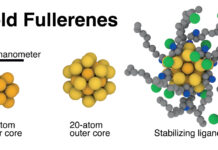
Additive manufacturing technologies continue to develop extremely rapidly. By their principal capacity of reproducing any given geometric complexity, they leave all the classical approaches far behind; digital manufacturing of goods by means of 3D printing is very fast, cost-effective, and waste-free. Fused deposition modeling (FDM) is the most common technique of 3D printing; it is based on the extrusion and fusion of a plastic filament. This technology is used universally for a huge variety of purposes due to the accessibility of personal 3D printing devices and cheap raw materials.
In recent years, FDM technologies have been intensively employed in direct digital manufacturing applications to facilitate obtaining of full-fledged final products. This trend is supported by both the widespread use of personal 3D printers and the increase in the range of materials for 3D printing. Online 3D printing services also promote to popularization and distribution of 3D printing. The key advantage of such services is the possibility for printing objects from various materials by a wide range of technologies many of which are not yet available for personal using, for example, selective laser sintering of powder materials. When using online 3D printing services, the user uploads his 3D model to the service server, selects the material for manufacturing, and at the end obtains the printed product. To select the most optimal for the customer online 3D printing service, one can use the aggregator service, which contains information on the additive manufacturing services available in different regions and the appropriate 3D printing technologies. If the user is a beginner in the 3D modeling, today there are many databases of ready-made 3D models that can be downloaded for further learning.
Thermoplastic polymers available to date include acrylonitrile butadiene styrene (ABS), polylactide (PLA), nylon, polyethylene terephthalate glycol-modified (PETG), polycarbonate (PC), polyoxymethylene (POM), polyethylene (PE), high impact polystyrene (HIPS), polyvinyl alcohol (PVA), and, in particular, a number of chemically and thermally stable materials such as polypropylene (PP), polyether ether ketone (PEEK), polyetherimide (ULTEM), and polyphenylsulfone (PPSU). These materials can be modified with various fillers: carbon fibers, fiberglass, metal particles etc., which further extends and enhances the scope of FDM application.
Important to note, FDM technologies are increasingly used for the design of scientific and industrial equipment, and the number of studies related to this topic is growing continuously. These technologies have been proved to be very relevant for the purposes of biochemistry and medicine, analytical equipment engineering, biotechnologies, pharmaceutics, and fine organic synthesis, as well as in the designing of chemical reactors and invention of new materials for electronics and energetics.
However, the popularity of FDM has brought to the forefront the critical limitation and major inconsistency of this technology, manifested as an insufficient quality of the printed items due to their structural defects (high porosity) and unsatisfactory sealing properties. Effective sealing of gases and liquids is a necessary requirement for the design of devices used in research, industry and a variety of practical applications.
Read more: Extrusion Speed Key to Improving FDM Part Quality?
thumbnail courtesy of journals.plos.org
Related Links:
Tethon 3D and University of Nebraska to Develop First Ceramic and Metal DLP 3D Printer











